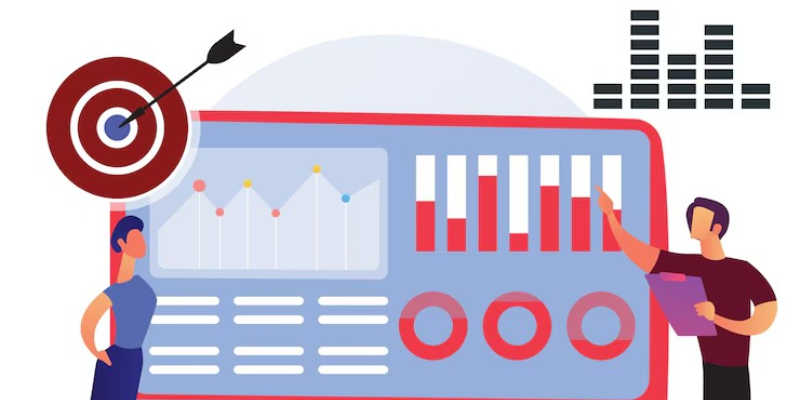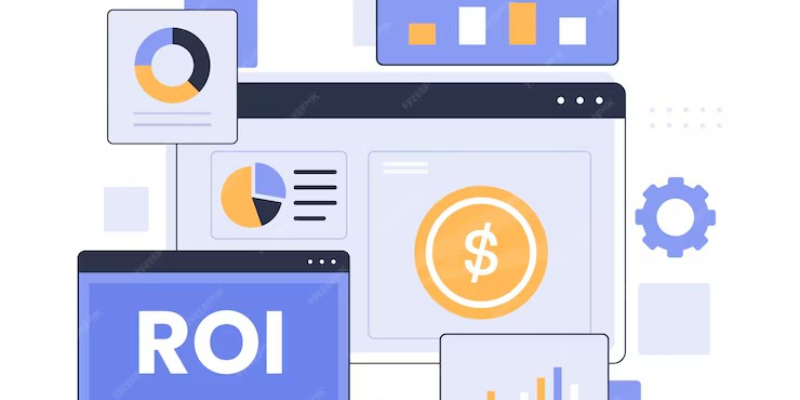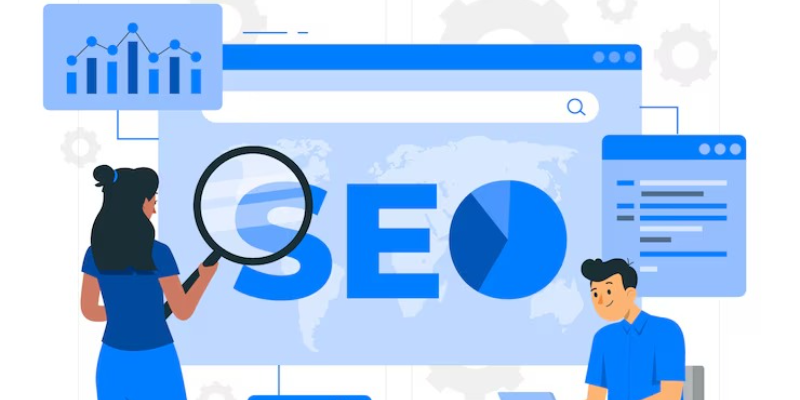

Performance marketing is a results-oriented approach where brands pay only for specific, measurable actions such as clicks, leads, or sales. This ensures accountability for every marketing dollar spent, contrasting with traditional advertising by focusing on optimized campaigns for maximum impact.
Measuring ROI (Return on Investment) is crucial to determine campaign profitability, enabling effective budget allocation and scaling successful strategies. Key performance indicators (KPIs) like Customer Acquisition Cost (CAC), conversion rate, and lifetime value (LTV) offer actionable insights. These insights help refine targeting, creatives, and spending to achieve better returns.
In essence, the combination of performance marketing and ROI tracking transforms ad spending into an investment in growth.
This is the most clear measurement of how well your marketing campaigns are performing. Return on Investment in marketing shows whether the campaign is profitable or not. It will enable you to know how much money was made with the amount spent.
This tells you what it costs to acquire one new customer. Customer Acquisition Cost (CAC) is the amount of money spent to get a new customer. It is very useful to determine if your marketing is working well to build a new business.
It tells you how much value your customer will bring throughout the time you do business with each of them. CLV will help you understand how valuable a customer is in the long run. That is important because it allows you to figure out just exactly what kind of value your customers are bringing in the long run.
This is the money you generate for every rupee invested in an advertisement. ROAS is used to measure ad spend effectiveness. It represents the ideal formula for evaluating the value for money of advertisements.
This allows you to know how many users take desired actions, which may range from buying a product to joining a newsletter. The conversion rate gives you the percentage of interest converted to sales. This comes in very handy when measuring how effective your marketing is at transforming interest into action.
You're running lead-generation campaigns. For example, getting people to sign up for a free trial. But this metric tells you how much it costs to get each lead. Cost Per Lead (CPL) measures the amount spent to get a lead.
For social media or content marketing, the engagement rate is how many people are interacting with your content through likes, shares, and comments. It measures how well your content resonates with your target audience.
The churn rate tells you how many customers are leaving your business (no longer buying or no longer using your product) over time. A high churn rate means you are losing customers rapidly, which is unhealthy for your business.
It is measured as the number of days it takes to close a deal from the first contact. In this measurement, the less the time taken, the sooner you convert the leads into clients as sales cycle length is a good sign. By keeping tabs on these numbers, you can know what is working, what's not, and where to fine-tune your marketing efforts to get better results!
When it comes to performance marketing, Return on Investment (ROI) is your north star metric. However, measuring ROI effectively requires breaking it down into a clear, step-by-step process and supporting it with relevant KPIs.
Start by calculating the total revenue that can be directly attributed to your performance marketing campaigns. This could include:
Example: If your Google Ads campaign generated $50,000 in sales over a month, this is your starting figure.
Add up all costs related to the campaign, including:
Example: If you spent $10,000 in total, this is your campaign cost.
The standard ROI formula for performance marketing is:
ROI(%)=Revenue−CostCost×100ROI (\%) = \frac{\text{Revenue} - \text{Cost}}{\text{Cost}} \times 100ROI(%)=CostRevenue−Cost×100
Example Calculation:
ROI=$50,000−$10,000$10,000×100=400%ROI = \frac{\$50,000 - \$10,000}{\$10,000} \times 100 = 400\%ROI=$10,000$50,000−$10,000×100=400%
This means you earned $4 for every $1 spent.
While ROI shows profitability, supporting KPIs help you understand the “why” behind your results. Track metrics like:
Review your ROI and supporting KPIs against industry averages or your past campaign performance to determine whether your marketing strategy is truly effective.

Greater ROI in digital marketing efforts is important to maximize marketing spend effectiveness. Here are some strategies that help in enhancing marketing ROI:
Be sure that you're targeting the right audience who is most likely to convert. Invest in data analytics to fine-tune your audience segmentation based on behavior, demographics, interests, and purchasing patterns. Retarget your ads to people who already engage with your brand, which means they have a better chance of getting converted because they already know your products or services.
Check the performance of every marketing channel, such as email, social media, PPC, and SEO. Learn which channels give the highest returns and pass the budget to those channels. Run routine A/B tests, also known as split tests, on all versions of your ads, landing pages, emails, and other marketing content. This way you will be working to optimize conversion rates and minimize CPA. Marketing automation tools can be used to automate repetitive tasks such as email marketing and posting on social media. Automation will definitely increase efficiency as well as reduce human error and multiply Return on Investment.
Optimize your landing pages so that they exactly mirror the look and feel of the ads with clear and compelling calls to action. The better optimised your landing page is, the higher your conversion rate will be. Make the process of conversion frictionless. Ensure each step from a purchase, newsletter sign up, to a form fill operation is as effortless as possible.

Invest in SEO. Organic search traffic is normally a high ROI channel because it maintains long-term results at a relatively low cost. Optimizing for SEO increases visibility within search engine results and often drives more traffic while improving conversion. Create high-quality, relevant, and valuable content for your audience. Data that informs or entertains your target audience will create trust and lead to a potential higher conversion.
Adopt the power of Google Analytics, CRM systems, and any other social media insights to track the performance of your campaigns. On regular intervals, analyze what is working and what is not. Focus on metrics that matter. Keep an eye on those metrics that are directly correlated to ROI such as Cost of Acquisition, average lifetime value, and conversion rates. Understand what would make the right touch points to convert data to optimize every stage of the customer journey. In this way, you're targeting not just the right audience but also the right message at the right time.
The moment you segment your email list depending on a customer's behavior, demographics, or previous purchases, you'll discover that there's a higher likelihood of it being relevant and, hence, engaging and convertible. Thanks to AI or data-driven insight, you can now give your customers personalized recommendations on your website or via emails telling them what else they could buy while raising their average order value through the alchemy of upsells and cross-sells.
The underperforming campaigns that are not bringing returns must be stopped completely. That budget can be very efficiently channeled towards performing channels and strategies. If you are using third-party ad platforms or tools, have a look at contracts and negotiate better rates or discounts.
You may want to team up with influencers who have impressive followings within your target audience. In many ways, Influencers drive more authentic traffic and sales, often bringing an ROI that's higher than that of traditional advertising. If this applies, set up an affiliate program that would allow others to resell your products for a commission. Affiliates tend to be more motivated when driving sales due to the profit motive - the cost is minimal, and ROI tends to be more efficient in general.
More than new acquisitions, retention of existing customers is sometimes better. Running loyalty programs, releasing exclusive content, or offering special deals creates repeat business. Continuously keeping the customer engaged after a sale through follow-up emails, conducting surveys, or contacting them through customer service. It might again result in repeat purchases and greater lifetime value for a customer.
Track your ROI from campaign to campaign and monitor how your changes are affecting results. It includes both immediate sales but also the long-term value that you have gained from customer acquisition due to lifetime value, referral, and brand loyalty. Applying a hybrid of these approaches can fine-tune your marketing, eliminate waste, and maximize your budget to help you achieve an attractive Return on Investment. That's not just the efficiency of spending money because marketing ROI is about that plus spending in the right places, with the right messages, to reach the right people.
Performance marketing is an extremely important form of digital marketing. If done properly, it can bring in a lot of sales and conversions. Bud is a popular performance marketing agency in Bangalore that can help you create successful digital campaigns that get maximum click through rate and brand awareness for your brand. As a well-known PPC agency in Bangalore, Bud specializes in digital marketing and can help you with all your digital marketing needs.